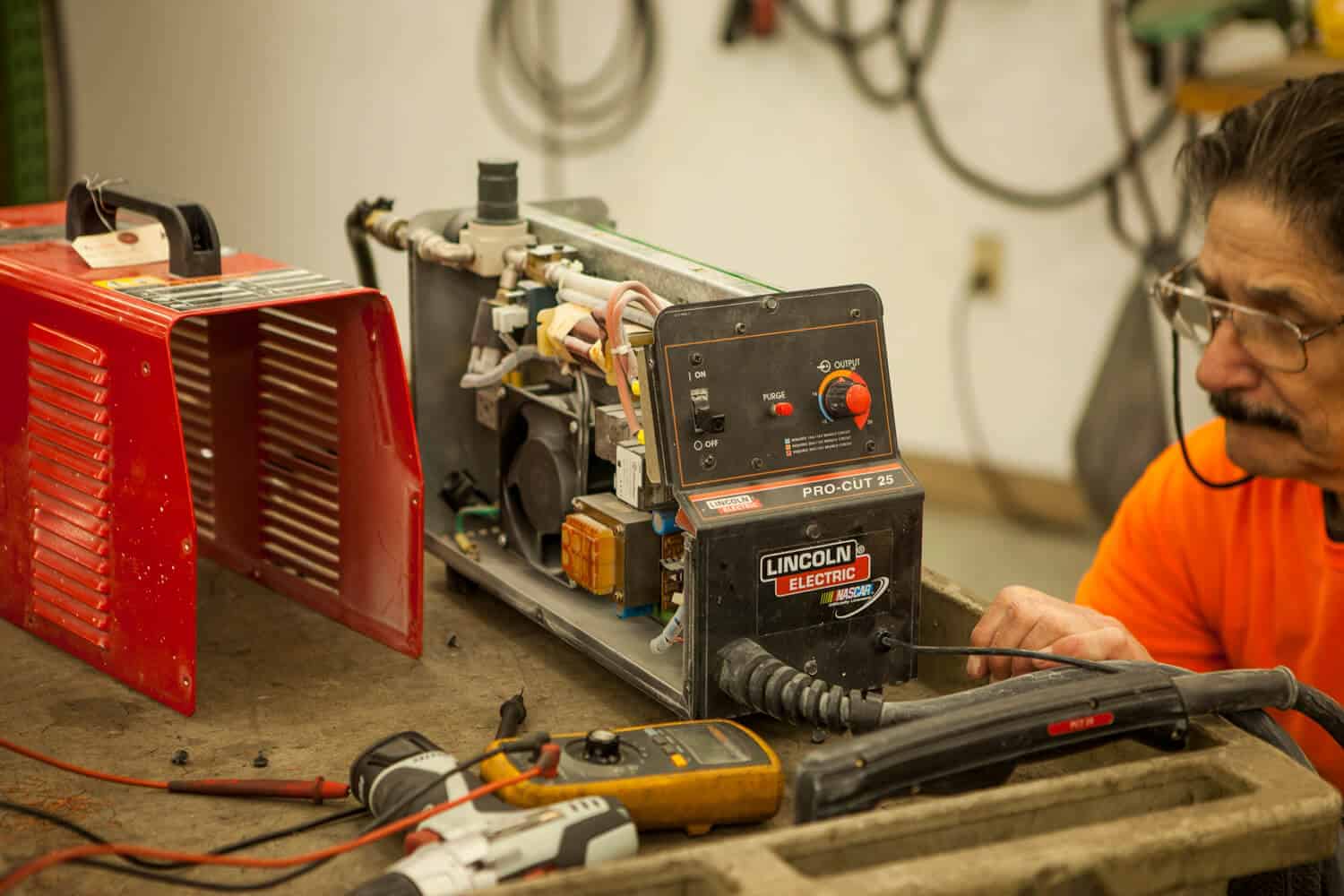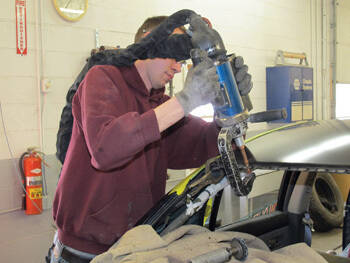Most frequent weld defects solved by Belgrade Welding experts
Wiki Article
Usual Welding Repair Service Issues and Exactly How to Address Them Successfully
Welding repairs frequently run into a variety of problems that can threaten the honesty of the final item. Typical problems include insufficient infiltration, porosity, and imbalance, to name a few. Each flaw offers unique difficulties that call for particular methods for resolution. Understanding these issues is crucial for welders intending to improve their abilities and results. This conversation will certainly check out these common welding repair work concerns and effective techniques to address them.Insufficient Penetration
Poor penetration takes place when the weld metal fails to completely fuse with the base material, resulting in weak joints and potential structural failings. This problem usually stems from inadequate warmth input, wrong electrode angle, or improper welding rate. Welders might experience poor infiltration because of a mistake of the essential criteria for a certain material density or kind. Additionally, contamination on the base product's surface area can prevent efficient bonding, worsening the problem. To resolve inadequate infiltration, welders must guarantee proper setups on their tools and keep a clean job surface area. Normal evaluation of welds is recommended to determine any type of deficiencies early, permitting prompt adjustments and the prevention of compromised structural stability in bonded assemblies.Porosity
Porosity is a typical flaw in welded joints that materializes as little gas bubbles caught within the weld steel. This problem can jeopardize the honesty of the weld, resulting in decreased stamina and prospective failing under tension. Welding. Porosity usually occurs from contamination, moisture, or incorrect welding techniques, which enable gases to leave right into the liquified weld pool. To address porosity, welders must ensure proper surface area preparation, maintain a clean workplace, and use ideal welding criteria. Additionally, picking the best filler material and shielding gas can alleviate gas entrapment. Routine evaluation and testing of welds can assist identify porosity early, guaranteeing timely restorative actions are taken, thus preserving the top quality and integrity of the bonded frameworkMisalignment
Misalignment in welding can develop from numerous aspects, consisting of inappropriate configuration and thermal growth. Understanding the origin is vital for reliable resolution. A number of modification strategies are available to straighten parts and ensure structural integrity.Reasons of Imbalance
Welding imbalance commonly originates from a range of underlying issues that can compromise architectural stability. One main reason is improper fit-up of components before welding, which can cause gaps and uneven surfaces. Variants in thermal expansion throughout the welding process can likewise cause distortion, specifically if the products being joined have different coefficients of development. Additionally, poor fixturing and securing may fail to hold elements firmly in position, leading to motion during welding. Poorly maintained devices, including welding devices and tools, may present variances in the weld grain, further adding to imbalance. Finally, driver error, originating from inadequate training or experience, can also play a considerable duty in producing misaligned welds.Adjustment Strategies Readily Available
Dealing with imbalance successfully needs a combination of corrective techniques customized to the certain problems handy. One typical technique is the usage of fixtures or jigs to hold components in the right setting during welding, ensuring regular placement. Additionally, preheating the materials can help in reducing distortion and improve fit-up. For substantial imbalance, mechanical realignment methods, such as utilizing hydraulic jacks or clamps, can be employed to deal with the setting before welding. Post-weld heat treatment might likewise be essential to alleviate anxieties created by imbalance. Careful inspection and change during the arrangement phase can protect against misalignment problems from becoming substantial troubles, promoting a smoother welding procedure and improving overall architectural stability.Distortion
Distortion is a common difficulty in welding that can develop from numerous elements, including uneven cooling and heating. Understanding the root causes of distortion is necessary for applying effective prevention techniques. Addressing this problem not only enhances structural stability yet also enhances the general top quality of the weld.Reasons of Distortion
When based on the extreme warmth of welding, products often go through modifications that can bring about distortion. This sensation primarily occurs from thermal growth and tightening throughout the welding procedure. As the weld location heats up, the material expands; upon cooling, it gets, which can develop inner stresses. Furthermore, irregular home heating throughout a work surface can worsen these stresses, resulting in bending or bending. Get More Information The sort of material likewise plays a substantial role; metals with varying thermal conductivity and coefficients of development might respond in a different way, leading to unpredictable distortions. Poor joint design and poor fixturing can contribute to imbalance throughout welding, boosting the likelihood of distortion. Recognizing these causes is essential for effective welding repair work and prevention strategies.Prevention Techniques
Reliable prevention methods for distortion throughout welding concentrate on managing heat input and making sure proper joint design. Keeping a consistent warm input assists to decrease thermal expansion and tightening, which can bring about distortion. Using strategies such as preheating the workpiece can additionally decrease the temperature slope, promoting consistent home heating. In addition, picking appropriate joint styles, such as T-joints or lap joints, can boost stability and minimize stress concentrations. Implementing correct fixturing to safeguard the workpieces in position see here now better aids in preserving alignment throughout the welding procedure. Staggered welding series can disperse heat extra uniformly, preventing local distortion. By applying these approaches, welders can significantly reduce the probability of distortion and improve the total high quality of their welds.Fracturing
Fracturing is a typical concern experienced in welding repairs, commonly resulting from different variables such as improper air conditioning prices, product choice, or inadequate joint prep work. The incident of cracks can considerably compromise the integrity of the weld, causing potential failures throughout operation. To resolve this issue, welders must initially assess the origin creates, guaranteeing that products work and appropriately picked for the particular application. Additionally, regulating the air conditioning rate during the welding process is necessary; rapid cooling can induce stress and anxiety and bring about fracturing. Correct joint design and preparation additionally add to lessening the danger. Implementing these methods can enhance weld high quality and toughness, inevitably decreasing the possibility of fracturing in finished weldments.
Insufficient Fusion
A considerable problem in welding repair work is incomplete fusion, which takes place when the weld metal does not sufficiently bond with the base product or previous weld passes - Montana Mobile Welding and Repair Belgrade Welding. This flaw can bring about weak points in the joint, potentially jeopardizing the stability of the welded structure. Elements adding to incomplete fusion include inadequate heat input, improper welding strategy, and contamination of the surface areas being joined. To resolve this concern efficiently, welders ought to assure appropriate pre-weld cleaning and surface prep work, along with adjust their welding parameters to achieve appropriate infiltration and fusion. Normal assessment throughout the welding procedure can also help recognize insufficient combination early, permitting timely corrective steps to enhance the overall top quality of the weldOverheating
While welding repair services can enhance structural stability, overheating presents a considerable obstacle that can result in product degradation. Extreme warm throughout welding can modify the mechanical residential or commercial properties of metals, resulting in minimized toughness, raised brittleness, and warping. This phenomenon is specifically essential in high-stress applications where architectural integrity is vital. Determining overheating can involve aesthetic examinations for discoloration or distortion, along with keeping an eye on temperature level during the welding process. To reduce the dangers related to overheating, welders must employ ideal strategies, such as controlling warm input, adjusting traveling rate, and making use of appropriate filler materials. Additionally, carrying out pre- and post-weld warm treatments can aid bring back product homes and improve the overall top quality of the fixing, making sure lasting performance and safety.Regularly Asked Questions
What Are the Common Signs of a Welding Issue?

Exactly How Can I Examine My Welds for Top quality?
To examine welds for quality, one can use aesthetic evaluations, ultrasonic screening, and radiographic approaches. Each strategy ensures architectural honesty, identifies issues, and confirms adherence to specified standards, inevitably improving the reliability of the welded joints.What Security Preventative Measures Should I Take While Welding?
When welding, one should focus on safety by putting on proper personal safety tools, making certain appropriate ventilation, securing flammable materials away, preserving a clean office, and understanding environments to avoid injuries and crashes.Can I Repair a Weld Without Redesigning the Entire Joint?
Fixing a weld without redoing the whole joint is possible, depending on the damage (Belgrade Welding). Techniques such as grinding, adding filler product, or making use of a welding process can effectively deal with certain flaws while protecting the bordering structureWhat Devices Are Vital for Reliable Welding Services?
Essential tools for reliable welding fixings include a welding maker, cable brush, grinder, protective gear, clamps, and filler materials. Each tool plays a crucial duty in making sure top quality and security during the repair procedure. Porosity usually emerges from contamination, moisture, or inappropriate welding techniques, which enable gases to escape right into the molten weld swimming pool. Badly conserved equipment, consisting of welding machines and tools, may present variances in the weld grain, further contributing to misalignment. When subjected to the intense heat of welding, materials frequently go through adjustments that can lead to distortion. Breaking is an usual issue come across in welding fixings, frequently resulting from different variables such as inappropriate cooling prices, product selection, or insufficient joint preparation. A substantial issue in welding repair work is insufficient blend, which takes place when the weld steel does not appropriately bond with the base material or previous weld passes.Report this wiki page